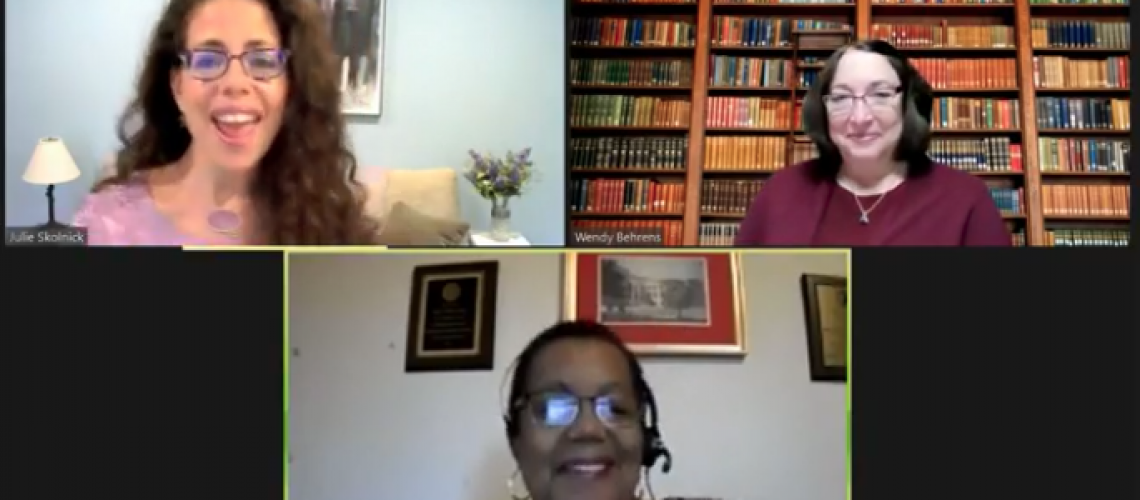I recently had the great privilege of sitting down with Dr. Joy Lawson Davis and Dr. Wendy Behrens to discuss equity in gifted education. Currently, particularly in the United States, this topic reaches far and wide in its relevance and urgent need for understanding and action. The experience of a twice exceptional learner mimics that of the culturally diverse learner. Feeling marginalized, unseen and experiencing a concentration on their perceived deficits, 2e learners’ access to appropriate education is often compromised. Add cultural diversity to the 2e profile, and this ‘3e’ learner is almost guaranteed barriers such as implicit and explicit bias, against their success. As Dr. Lawson Davis said, “We can’t just be advocates, we have to be activists.”
Why is there underrepresentation of diversity – cultural or neuro – in gifted classrooms and what can we do about it?[1]
Plenty of research indicates that African Americans are the most underrepresented group of learners in gifted classrooms. I believe that the first misstep is a lack of accurate understanding of the African American experience. In other words, our education system is steeped in bias. Unfortunately, the ugly truth of implicit and explicit bias exists against race, color, income, and gender. These gifted diverse kids often resort to leaving their cultural identities behind. In a chameleon like manner, they shed their ‘skin’ in search of ways to fit in. This assimilation is demoralizing for them and results in an immense loss for the greater population.
Wendy Behrens points to the oft used labels: EL, ELL or ESL – English learner, English language learner or English as a second language to illustrate the deficit-based nature of the educational system. These typical monikers are used to describe culturally diverse students who speak multiple languages. I don’t know about you, but I’d love to speak more than one language. Why does the education system identify this as a shortfall? Rather, Behrens recommends using “multi-lingual” as a descriptor to recognize a talent that already exists. Further, that the student is multi-lingual suggests that there may be differences in the student’s background, family life and life experience. Taking the time to learn about these realities will not only support access to learning but will enrich the student’s as well as the teacher’s (and their classmates’) experience. In the case of black and brown learners, educators would do well to follow suit and take the time to learn about the student’s culture. So too, when interacting with a twice exceptional learner – it is imperative to understand their learning differences and how they affect their educational experience.
Assumptions are often made about these diverse populations including prejudice against intellect, ability and desire. We hear words like ‘lazy,’ ‘nonconforming,’ ‘dysregulated,’ and ‘underachievers’ to describe culturally diverse and neurodiverse students. When we dig beneath these assumptions all we find is prejudice. Even if we notice our own personal biases, we don’t know what to do or how to change. Here are five steps to become an activist toward educational equity:
- Set aside assumptions.
- Make a personal connection.
- Ask “What do you need?” and “How can I support you?”
- Conduct universal screening.
- Engage in community and parent outreach.
Set Aside Assumptions
Somehow differences make humans question abilities. We see someone physically, mentally or emotionally different and we immediately go into deficiency mode. Certainly, when the medical mode of ‘diagnose and fix’ is at play, the focus is shifts to deficits. We must set aside assumptions and in fact, focus on strengths. A child who interrupts does not have to be defined as disrespectful; she may be intensely curious. The student who paces while he listens is energetic. The doodler has found a way to harness her creative energy in order to focus. A child from a low-income family who is late to class may be making an enormous effort to attend school. A child unable to attend after school enrichment, is likely not avoiding this opportunity or not interested, he may be responsible for his younger sibling’s care. Not only are assumptions often wrong, but they also discount the efforts and abilities of culturally and neuro-diverse learners.
Make a Personal Connection
The only way to rid ourselves of assumptions is to ask questions and make connections. Find out what the student’s life is like. What do they do before and after school and on weekends? What is their family structure like? How do they connect with community? In essence, take the time to seek out what makes the learner different and unique. Doing so not only allows you to forge a connection and engender trust, but it gives you insight into why the student does or does not do certain things. Dr. Behrens shared that many Indigenous children are taught not to look their elders in the eyes. Doing so is a sign of disrespect. Asking a child about their culture and learning about their customs will inform you of relevant nuances in the child’s life that may be counter to the white American experience.
Similarly, it is imperative to determine if a neurodiverse child is a visual, an auditory or a kinesthetic learner. This information gives the educator the ability to tailor instruction and homework to suit this learner’s strengths.
Ask ‘What do you need?’ ‘How can I help you?’
Coming to a student and asking either of these questions indicates a willingness to meet the student where he is. Just opening up this door can foster a deeper personal connection and will surely give insight into where this child is stuck. Even if the child cannot express needs or a way in which you can help, you can ask more specific questions like “What’s hard?” or “What do you love doing?” These questions allow you to identify areas of weakness and strength and signal to the child that you are a trusted person who wants to help.
This approach is akin to the SWOT analysis utilized in busines. Consider Strengths, Weaknesses, Opportunities and Threats vis a vis your diverse learner. Once you know these, you can address the child in a more holistic, inclusive, positive way.
Conduct Universal Screening
Universal screening calls for assessing all students for giftedness. Dr. Behrens recommends doing so in second grade, fourth grade and middle school. The goal is to find learners who can benefit from participating in gifted services. Once these kids are found, their talent development can be supported. All too often diverse children are told that they have to wait until… They have to wait until they’re fluent in English, they have to wait until their behavior is improved, they have to wait until their learning difference goes away. This is exactly the opposite approach that should be followed. Best practices indicate that focusing on strengths allows the challenges to dissipate more quickly. Those skills that seem so lagging in a toxic environment, may disappear – literally disappear — if the child is challenged, excited and motivated.
Engage in Community and Parent Outreach
In the case of cultural diversity, is crucial to include a child’s community in the discussion of learning and giftedness. Various minority cultures don’t feel like they belong in gifted programming or that the programming is for them. Dr. Lawson Davis talks about taking information sessions and injecting them into the community. Offer information about giftedness and gifted programming in community centers. Utilize community leaders to help disseminate information about gifted education. Contact parents and make sure they know about gifted programming and that their child is bright.
Dr. Behrens talks about opportunity versus access. Reaching out to parents to understand their situation – to understand why their child can’t make a review session or an enrichment program after school or on a weekend, will give data to translate opportunity into access. Giving an opportunity to take a review course on a Saturday, for instance, leaves out those who observe Sabbath on that day. There is an opportunity, but they don’t have access because they can’t attend. Scheduling all enrichment after school for a family who does not have transportation options to pick up their child, removes access. Involving parents and the community in understanding, education and to learn of potential issues, provides diverse students with equal opportunities.
Implementing these five steps allows diverse learners and their families to be a part of the educational process and affords everyone the increased opportunity to learn from and with each other.
[1] The information in this blog comes largely from conversations, conference sessions, books and articles by Joy Lawson Davis, Ed.D., Donna Y. Ford, Ph.D., Kristina Collins, Ph.D., Ed.S., Wendy Behrens, Ed.D., Renae D. Mayes, Ph.D., NCC, LeDerick R. Horne and Colin Seale.

Author: Julie Skolnick
Julie Skolnick, M.A., J.D., is the Founder of With Understanding Comes Calm, LLC, through which she passionately guides parents of gifted and distractible children, mentors 2e adults, and collaborates with and advises educators and professionals on bringing out the best and raising self-esteem in their students and clients.

